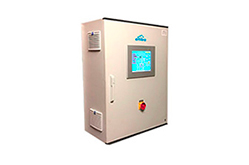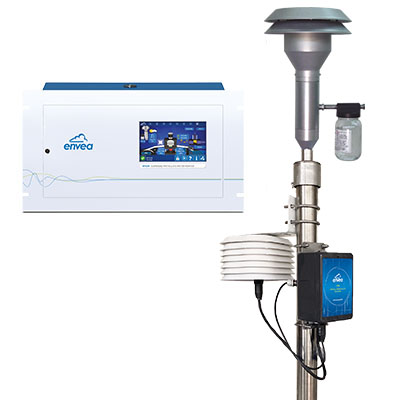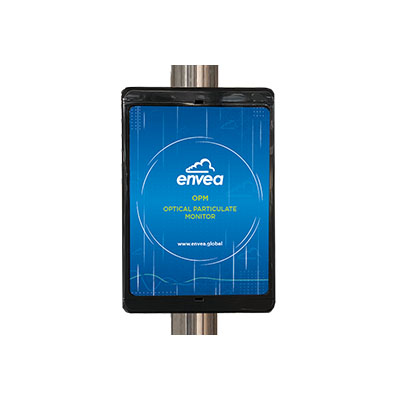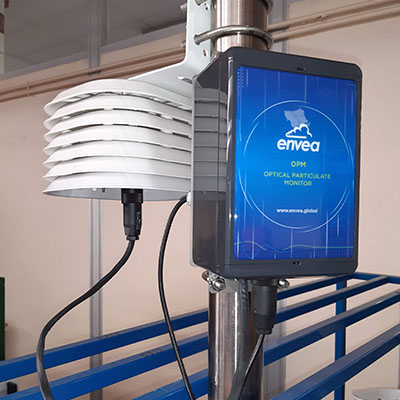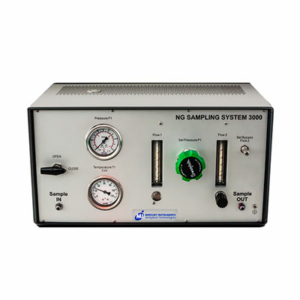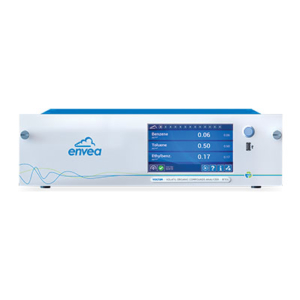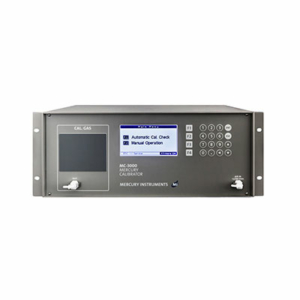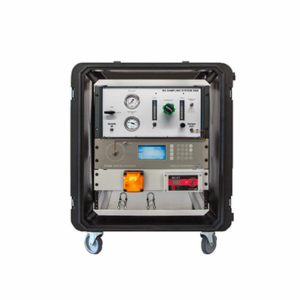Automatische Echtzeit-Schwebepartikel-Überwachung
MP101M Beta Messgerät mit seinem optionalen OPM (Optischer Partikelsensor)
Die Standard-Beta-Gauge-Messmethode ISO 10473 des MP101M-Analysators ermöglicht bei Verwendung mit der patentierten optischen Technologie der Lichtstreutechnik* CPM-Modul die kontinuierliche und gleichzeitige Messung von Feinstaub.
Die Kombination beider Technologien bietet eine Echtzeitanzeige von Partikeln für PM10, PM2,5 und PM1 gleichzeitig. Sie bietet eine hohe Genauigkeit, wobei die Messung nicht durch die physikalisch-chemische Natur, Farbe oder Form der Partikel beeinflusst wird. Das optische CPM-Modul ermöglicht die Auswertung verschiedener Partikelgrößenfraktionen in Echtzeit.
Präzise Messgeräte zur Überwachung der Beta-Dämpfung von PM10, PM2,5, PM1
Optische Echtzeit-Anzeige der Massenkonzentration von PM10, PM2,5, PM1 (μg/m3) unter Verwendung eines unabhängigen Einlasses
- Features & Benefits
- Main applications
- Technical Specification
- Options & Accessories
- Principle of operation
- Downloads
- True volumetric air flow control with 3 atmospheric pressure and temperature sensors
- Sampling flow-rate continuously regulated to the atmospheric temperature and pressure: reduces evaporation artefacts of volatile compounds (mandatory for PM2.5 according to EU regulations)
- Automatic calibration of the real time optical module (OPM) to the reference measurement (ß gauge)
- Flow calibration possible during the measurement
- Built-in reference gauge for calibration: no need for factory re-calibration
- Calibration screen for atmospheric pressure sensors
- Regulated Sampling Tube (RST) compliant with CEN PM10 and US-EPA standard: sample not affected by seasonal or geographical factors and avoids evaporative losses of semi-volatile particles
- Fibreglass tape with 3 years of autonomy of continuous sampling with daily cycles (1200 cycles)
- Low activity C14 sealed flat source with analyzer lifetime duration
- Rugged instrument, not sensitive to vibration, humidity, temperature…
- New: On board web server compatible with any internet browser. ENVEA Connect™ user interface with on-line help for the display, configuration, maintenance, diagnostics or software updating of the analyser, remotely, from any PC, tablet or smartphone.
- Ambient air quality monitoring
- Indoor dust monitoring
- Working places
| MP101M Technical specifications | |
|---|---|
| Measured parameter | PM10, PM2.5, PM1, TSP |
| Technology | Beta Ray Attenuation |
| US-EPA Approval / QAL 1 Certification | YES |
| Measurement ranges | up to 10 000 μg/m3 |
| Measurement units | µg/m3 |
| Lower Detectable Limit (2σ) | 0.5 μg/m3 (24h average) |
| Sample flow rate | 1 m³/h |
| Sampling pump | External (vacuum pump) |
| Temperature range | +5°C to 40°C |
| Data storage | Unlimited |
| Included I/O | LAN/USB/WIFI/AO |
| Weight (Kg) | 15.2 (+pump: Picolino 4.6Kg / KNF 9.4Kg) |
| Dimensions mm (LxWxH) | 360.5 x 483 x 266 |
| Chassis | 19″ Rack, 3U |
| Pressure and temperature compensation | YES |
| OPM Technical specifications | |
|---|---|
| Technology | Light scattering (*) |
| Max. concentration | 0-1000 μg/m3 |
| Range of size | 0.3-10 μm |
| Lower detection limit | 1 μg/m3 |
| Temporal resolution | 1 second |
| Dimensions (WxDxH) | 230 x 370 x 200 mm |
| Flow | 2.5 L/min |
(*) Light scattering technologies applied to particle mass concentration measure can be affected by aerosols chemical composition and atmospheric conditions & should be subject to operator interpretation.
- OPM module for optical real-time measurement
- US EPA and EU-CEN compliant sampling inlets
- Temperature-regulated sampling tube (RST): 1 m, 1.5 m, 2 m, 2.75 m, compliant with CEN PM10 Directive
- Max 2 ESTEL electronic boards with:
– 4 independent analog inputs / outputs
– 4 remote control inputs
– 6 dry contacts outputs - External pump assembly: diaphragm (9.5kg), rotary vane (7kg)
- Easy to install span calibration module for automatic and programmable calibrations
- Field connection kit for leak and zero test (on RST tube)
- Laboratory connection kit for leak and zero test (on MP101M)
- Bead flowmeter for leak test
- HEPA filter for zero test
Low energy beta rays are absorbed by collision of dust, whose number is proportional to density. Absorption is thus a function of the mass of the irradiated material, independently of its physico-chemical nature.
Combination of both technologies provides simultaneously approved particulate measurement PLUS real-time indication of PM10, PM2.5 and PM1.
Verwandte Produkte
-
NG Sampling System 3000
Das Probenaufbereitungssystem ist ein Druckminderungsgerät und dazu gedacht, Probengas aus einer unter Druck stehenden Erdgasquelle zu entnehmen.
Mehr lesen
Probenaufbereitungssystem für Erdgas
NG Sampling System 3000
-
VOC72M
Die Messtechnik des VOC72M, die der Norm EN 14662-3 (2005) und EN 15267-1 (2009) für die Messung von Benzol entspricht, basiert auf Gaschromatographie (GC) in Verbindung mit einem Photoionisationsdetektor (PID)
Mehr lesen
Volatil-Analysator für organische Verbindungen BTEX
VOC72M
-
MC 3000
Der MC 3000 erzeugt einen Gastrom mit konstanter Quecksilberkonzentration um Hg-Messgeräte zu überprüfen oder zu kalibrieren.
Mehr lesen
Quecksilber-Kalibriergasgenerator
MC 3000
-
UT-3000 NG mobile
Perfekt geeignet um die Effizienz unterschiedlicher Hg-Absorber (Mercury Removal sytems, MRUs) in der Erdgasverarbeitung zu überwachen.
Mehr lesen
Mobiler Quecksilberanalysator für Erdgas
UT-3000 NG mobile
